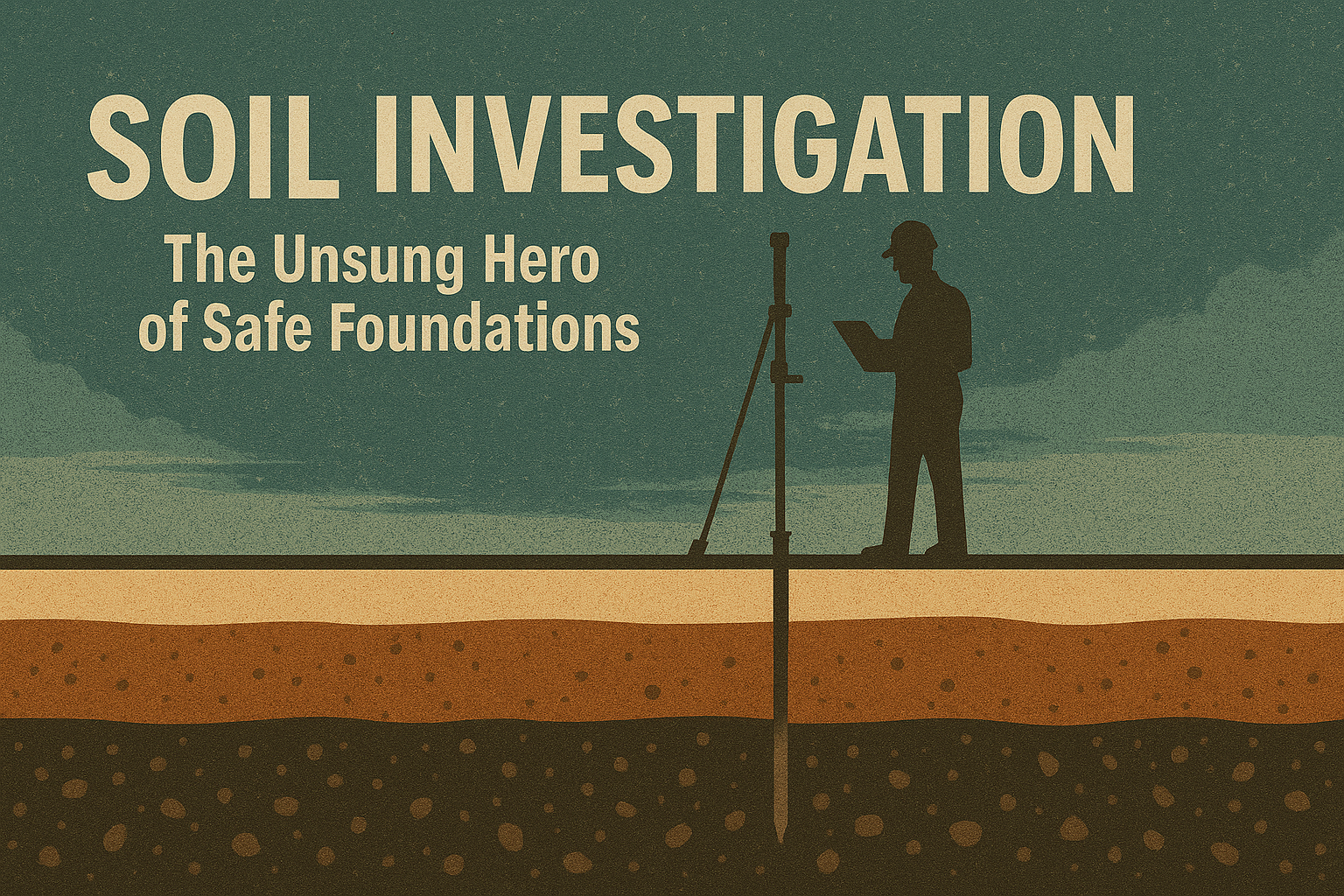
The Unsung Hero of Safe Foundations
When we admire a towering skyscraper or a beautifully designed home, we often forget the most critical part — the foundation. And before any foundation is laid, there’s a quiet yet crucial process that determines whether that structure will stand strong or slowly fail over time. That process is called soil investigation.
Despite being one of the most vital steps in construction, soil investigation remains underappreciated — the unsung hero of safe, durable, and cost-effective building projects.
What Is Soil Investigation?
Soil investigation is the process of analyzing subsurface conditions before construction begins. It involves collecting soil samples, studying their properties, and understanding the behavior of the ground on which a structure will rest.
This process determines:
- 1. Bearing capacity of the soil
- Type and depth of foundation required
- Soil composition and moisture content
- Presence of groundwater
- Settlement risks and soil stability
Why It Matters
1. Structural Integrity Begins Below Ground
No matter how strong the materials or how brilliant the design, a building is only as stable as the soil it rests on. Inadequate or incorrect assessment can lead to cracking walls, uneven settling, or total foundation failure.
2. Right Foundation Type and Depth
A proper soil investigation ensures that the chosen foundation system — whether shallow or deep — is engineered to match the site conditions, preventing overdesign or underperformance.
3. Cost Optimization
Understanding the soil allows engineers to avoid unnecessary excavation, excessive use of reinforcement, or costly foundation alternatives. This means better budgeting and more efficient construction.
4. Risk Mitigation
Soil can hide many surprises: expansive clay, collapsible sands, or seismic activity zones. Identifying these risks early enables the design team to incorporate preventive solutions rather than dealing with problems after construction.
The Investigation Process
A thorough soil investigation includes:
- Desktop study of geological maps and historical data
- Site reconnaissance
- Borehole drilling and sampling
- In-situ testing (e.g., Standard Penetration Test)
- Laboratory analysis (grain size, Atterberg limits, etc.)
- Geotechnical reporting and foundation recommendations.
Real-World Consequences of Skipping It
Across the world, buildings have collapsed, bridges have failed, and roads have buckled due to poor or absent soil investigation. It’s a classic example of ignoring what cannot be seen — until the consequences are irreversible.
Our Approach at RE-BUILD Construction Pvt. Ltd.
At RE-BUILD, we believe that every successful project begins with a solid understanding of the ground beneath it. Our geotechnical team ensures that soil investigation is not treated as a formality, but as a strategic pillar of safe construction. Whether it’s a small commercial plot or a high-rise project, we make sure nothing is built on assumptions.
Conclusion
Soil investigation may not be visible in the final structure, but its impact is embedded in every safe step we take inside that building. It is the silent guardian of structural safety, financial efficiency, and long-term performance.
In construction, what lies beneath is just as important as what rises above.
